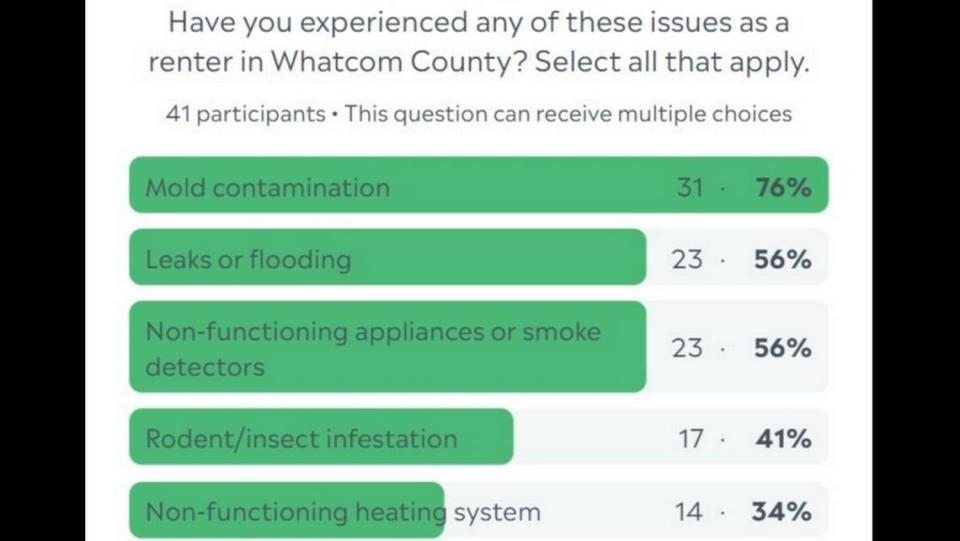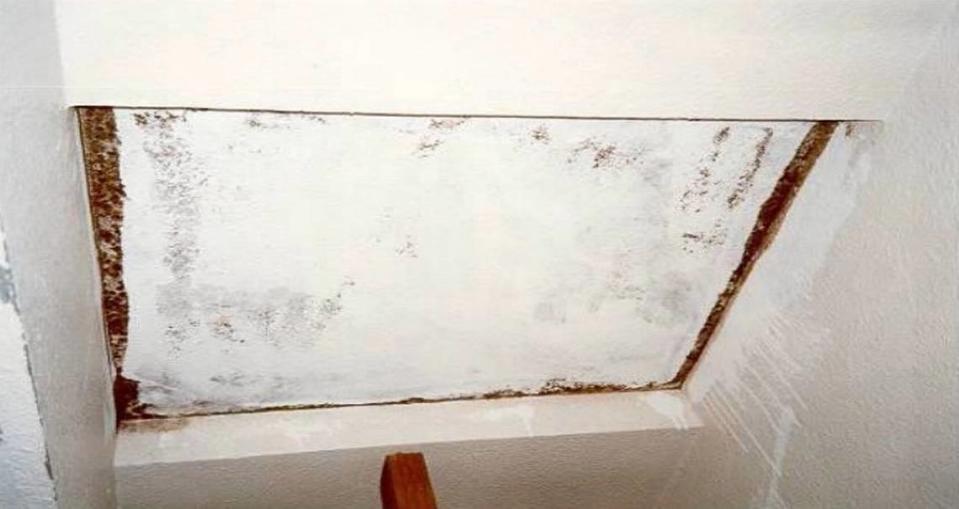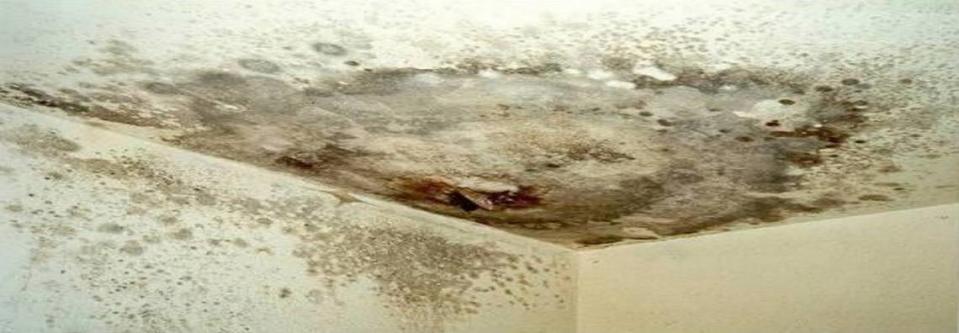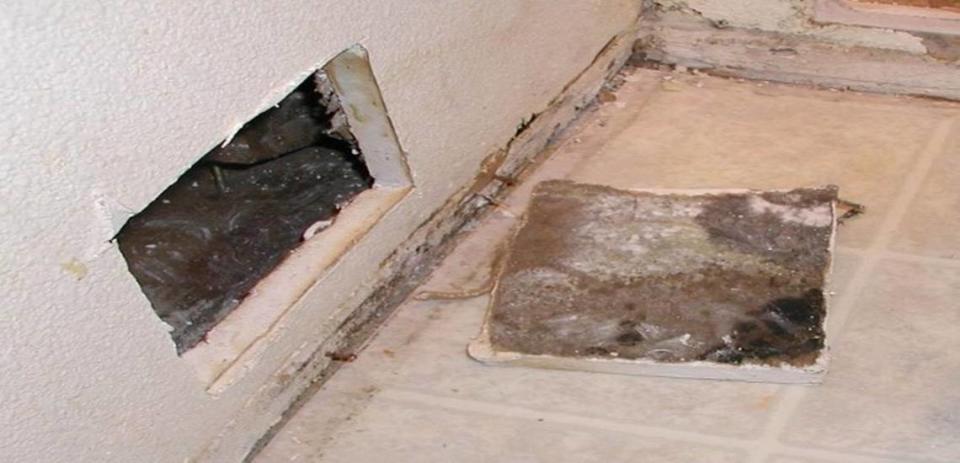This is the No. 1 problem Bellingham renters face. Housing advocates want protections
Mold in Bellingham rental houses and apartments disproportionately impacts tenants and is made worse by poor legislation and substandard mitigation practices, tenant advocates say.
In fact, mold was listed as the No. 1 problem facing renters in the rainy Pacific Northwest among readers participating in a Bellingham Herald poll.
“Most people that I talk to have mold issues,” said Rebecca Quirke of the local advocacy group Tenants Revolt. “Mold is incredibly dangerous.”
Quirke has spoken with hundreds of tenants since the group began in July 2022, with the goal of bringing a series of mass-action and class-action lawsuits against landlords for habitability violations, theft and property negligence.
Mold is the most-common indoor air quality problem, according to the Northwest Clean Air Agency. Mold growth often causes health issues and damages homes.
The impact on tenants
Mold problems inside buildings are a result of excess water and moisture that accumulate due to things like inadequate ventilation, leaks and flooding.
Results of the recent Bellingham Herald poll show that, of those who responded, mold contamination is the issue experienced most by tenants in Bellingham rentals.

Tenants Revolt has documented numerous older homes occupied by Bellingham renters that are actively in this sort of disrepair. Quirke says she has taken countless reports and personally visited homes that have unmitigated mold infestations. She is even seeing this issue in her own rental unit where she lives.
“It’s clear that nothing is being done. There’s no insulation. many places don’t have heat or have active leaks. A lot of people that I speak with don’t realize that they have mold,” Quirke told The Bellingham Herald.
Kristina Michele Martens, a member of the Bellingham City Council actively campaigning for mayor, says mold infestation tends to disproportionately impact renters who are trying to navigate the ongoing housing crisis.
“When there’s nowhere else to go, when to get into a habitable location is maybe a $500, $700, $1,000 increase from where you’re at, with the rents so high and the competition being so fierce, those of us who are renters — we don’t really have anywhere else to go. We have to take what is being offered to us if we just want to be sheltered,” Martens said.
The Bellingham Herald reached out to several local property management companies for comment on the state of mold in their rental units and how it is remediated when found, but they did not respond.
There are no quick fixes
Mold often grows inside the walls of homes, making it challenging to spot without proper testing. Even after testing is done, fixing the issue can be expensive and difficult, so poor mitigation strategies are sometimes implemented.
“What we’ve seen a lot of the time is ceiling paint covering the mold,” Quirke said.
The Washington State Department of Health advises against painting or caulking over mold as it will continue to grow under the paint and the paint will peel.

Quirke says she’s also seen tar paper stapled above drywall to prevent water from a leak from making its way into the main living area of a home.
“It’s not fixing the problem at all,” she said.
In the instance of a leak that has resulted in moisture penetrating building materials, it’s very common for landlords to fail to fully realize the scope of the issue, according to the Northwest Clean Air Agency. The agency says materials like drywall, carpet and subfloor need to be aggressively dried to prevent mold growth, sometimes requiring professional assistance. Otherwise, mold growth will persist, causing occupant exposure and property damage.
Mold impacts health
The Washington State Legislature acknowledges that exposure to mold and its toxins can cause adverse health effects “including loss of memory and impairment of the ability to think coherently and function in a job, and may cause fatigue, nausea and headaches.”
Mold exposure may also lead to skin rash, running nose, eye irritation, cough, nasal congestion, aggravation of asthma, or difficulty breathing. Immunocompromised individuals that come into contact with mold may also be at increased risk for infections, according to the Washington State Department of Health.
Exposure can occur through breathing contaminated air, touching mold or ingesting moldy food.

Lisa Tenney, a Bellingham renter and certified mold inspector, hosts The Moldy Mama Podcast. She became ill from mold poisoning after living in a house on Peabody Street with her children for more than a decade that had reoccurring flooding.
“It was very neglected,” Tenney said. “The windows were rotting. The front porch was rotting. There were rodent holes in my daughter’s ceiling.”
Tenney says she developed gut issues and experienced daily nausea which impacted her ability to work. She also experienced worsening symptoms of her mental health issues. Eventually, she says she became bedridden with pneumonia.
Tenney says her symptoms have alleviated since moving out of the house. Now that she’s a mold inspector, Tenney says she’s become more attuned to how widespread the issue is.
“To me, as a mold inspector, it’s more like, ‘Where is it?’ versus ‘Is it here?” Tenney said.
Legislation is lacking
The Washington State Legislature recognizes that residents “face preventable exposures to mold in their homes, apartments, and schools.”
But there are no explicit protections against mold for tenants in Washington, unlike other states like California.
“It’s [the tenants’] understanding that they’re responsible for persistent mold that has been unsatisfactorily remediated or covered up because the document that is passed out with lease agreements says this is a shared responsibility between the owner/management company,” Quirke said.
Washington law requires that landlords “maintain the dwelling unit in reasonably weathertight condition.” It also requires they provide tenants with information approved by the Department of Health about the health hazards associated with exposure to indoor mold. The information needs to detail how tenants can control mold growth in their units to minimize associated health risks.

But the law does not require landlords to do mold remediation. Condensation accumulation indoors is also often considered the fault of the tenant, according to the Northwest Clean Air Agency.
Quirke says property owners need to be held more legally accountable.
“We need strong, aggressive, clear guidelines around this,” Quirke said. “We need mold legislation. We can do it locally if the state doesn’t want to implement it. I think a lot can be done at the city level.”
Martens says there is a lot of work to be done to address habitability issues for renters locally, including mold infestation.
“We know mold is an issue. We know habitability is huge. And yet everyone is dragging their feet on this,” she said.
Martens says the city can and needs to “take the appropriate legal steps like establishing a department, finding the funding and deciding how [to] tackle this.”
Preventative measures
If mold is growing in your home, the Whatcom County Health Department recommends airing it out as much as possible. If the problem is a water leak inside the walls or behind an appliance, the leak must be fixed and the area must be dried out completely, potentially by removing the wall if the damage is too extensive to clean.
Tenney recommends using a dehumidifier to keep the humidity in your home between 30% and 50%, keeping windows cracked as frequently as possible to help exchange indoor and outdoor air, cleaning your HVAC system yearly to avoid collecting mold and redistributing it throughout the house, and diligently checking your crawlspace or attic for signs of mold.
Tenney also recommends documenting the issue for your landlord.
The Washington State Department of Health recommends the following:
▪ Stop water leaks and repair leaky roofs and plumbing. Keep water away from concrete slabs and basement walls.
▪ Make sure that warm air flows into all areas of the home. Move large objects a few inches away from the inside of exterior walls to increase air circulation.
▪ Install and use exhaust fans in bathrooms, kitchens, and laundry rooms.
▪ Ventilate and insulate attic and crawl spaces. Use heavy plastic to cover earth floors in crawl spaces.
▪ Clean and dry water-damaged carpets, clothing, bedding, and upholstered furniture within 24 to 48 hours, or consider removing and replacing damaged furnishings.
▪ Vacuum and clean your home regularly to remove mold spores.
▪ Check around your windows for signs of condensation and water droplets. Wipe them up right away so mold can’t start to grow.

 Yahoo Sports
Yahoo Sports 